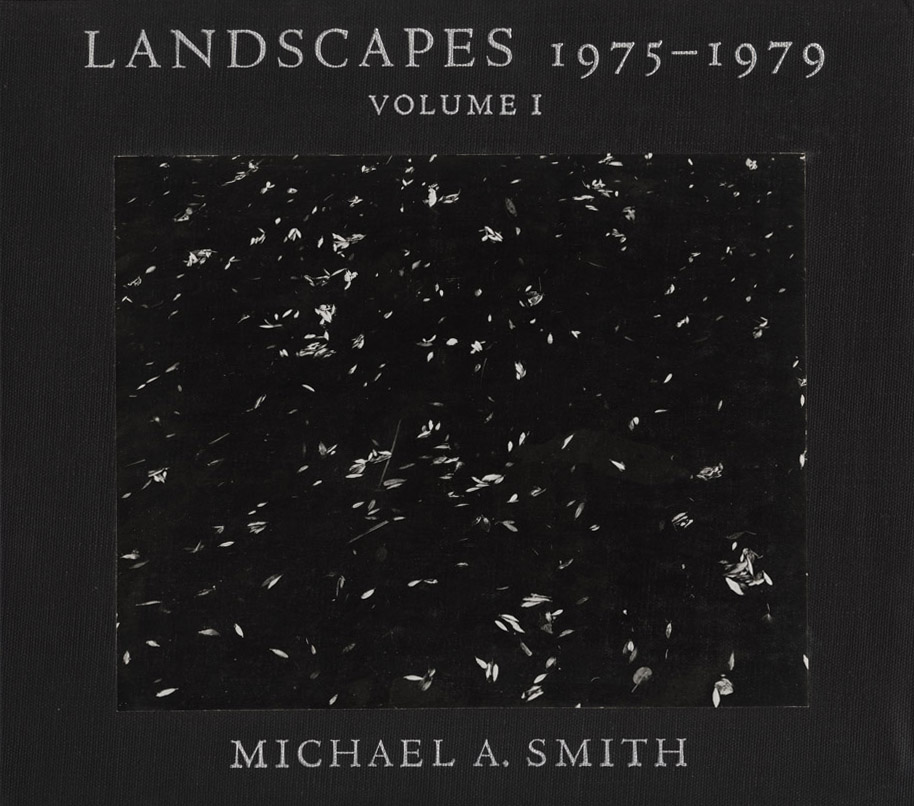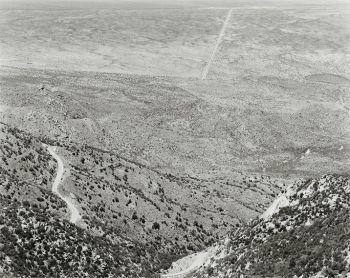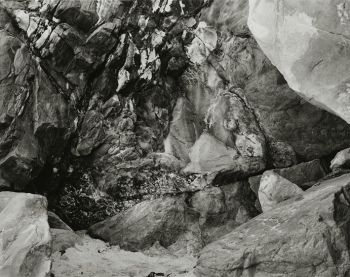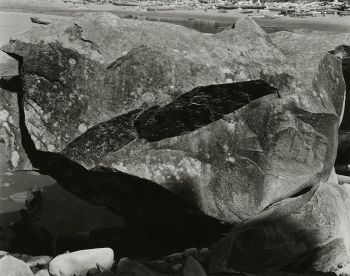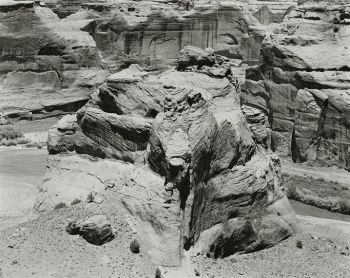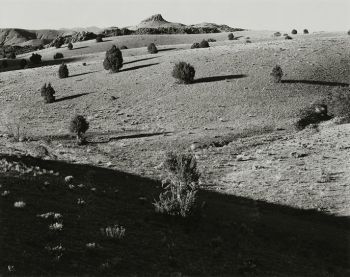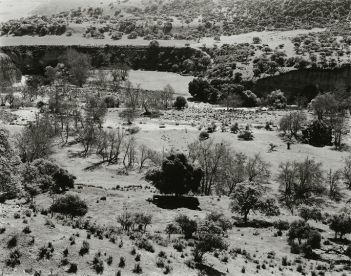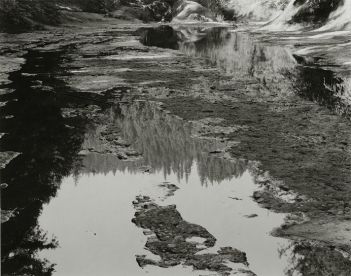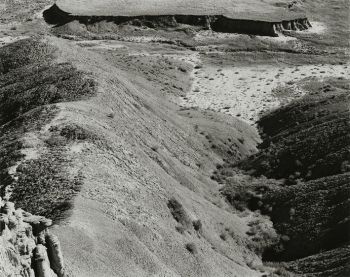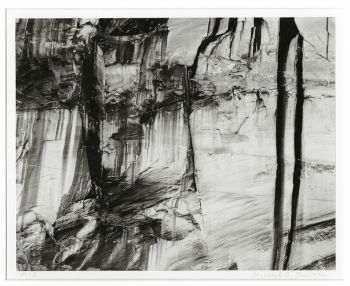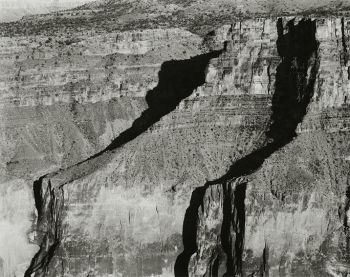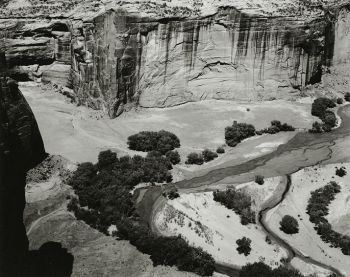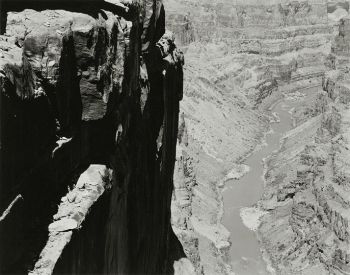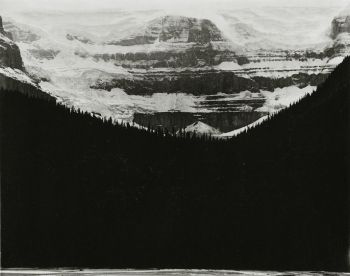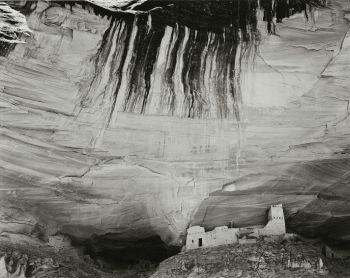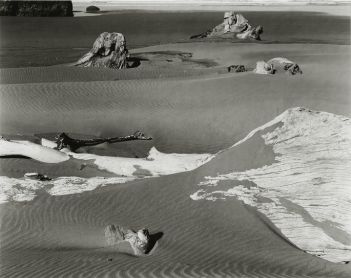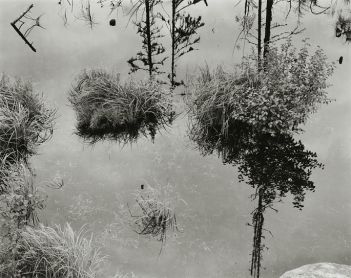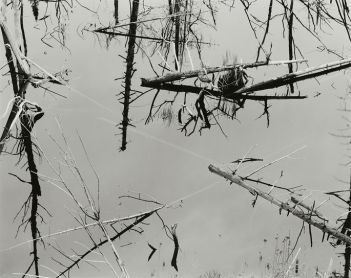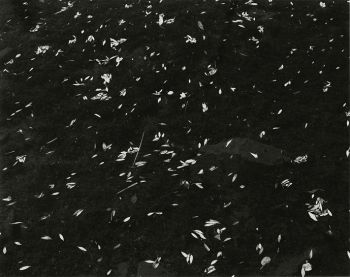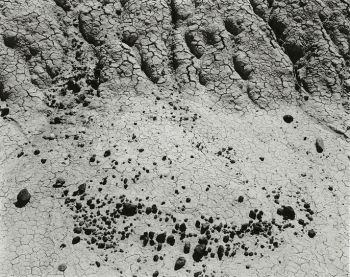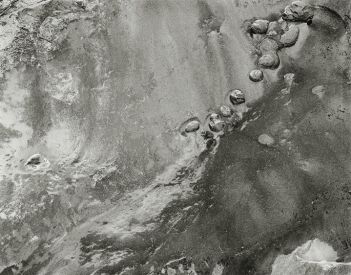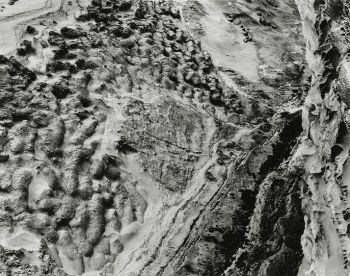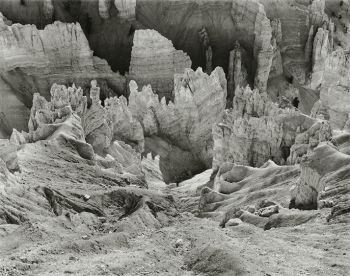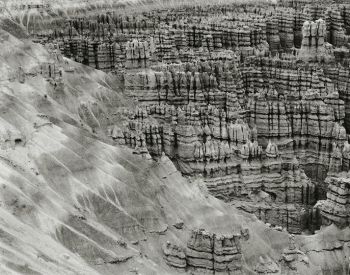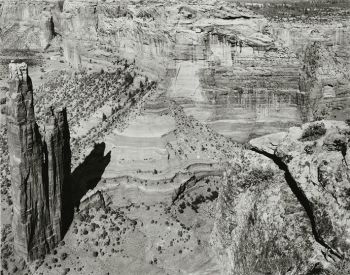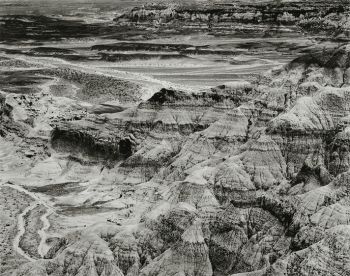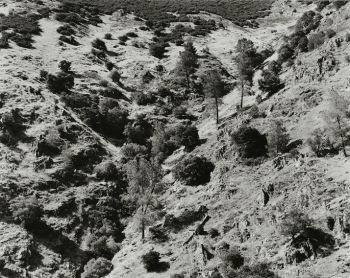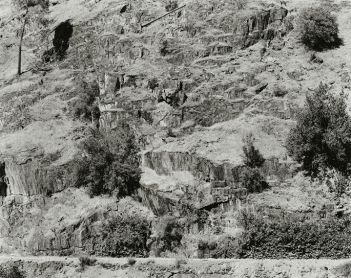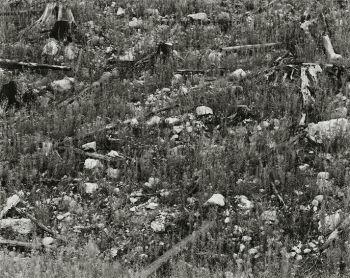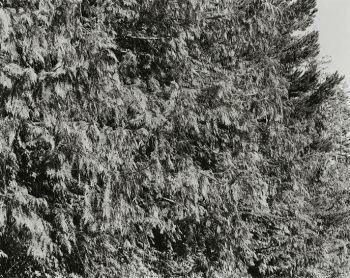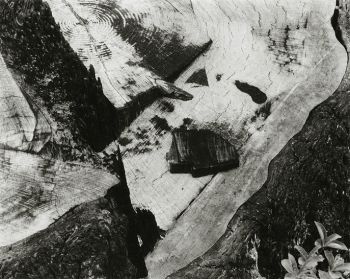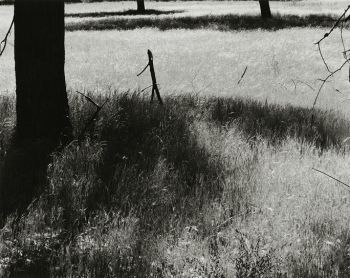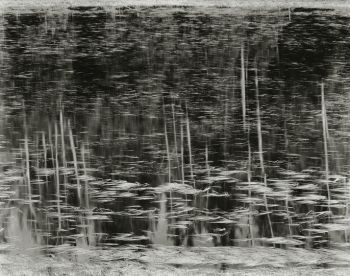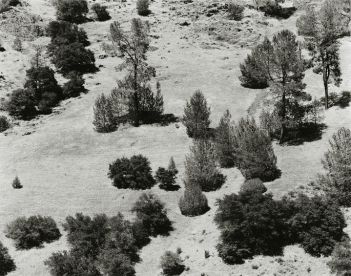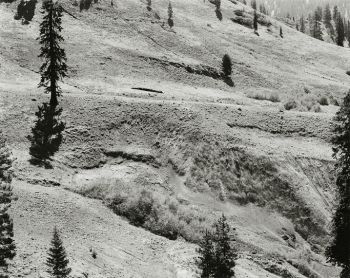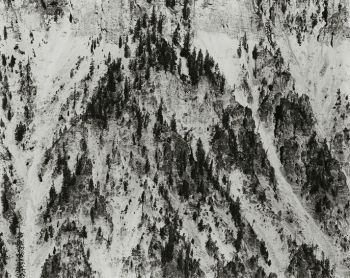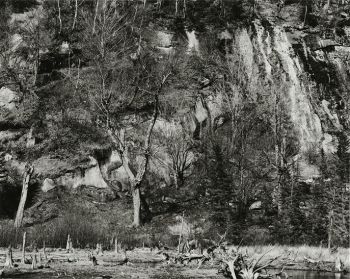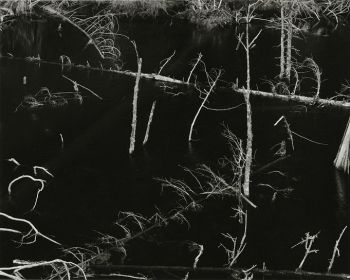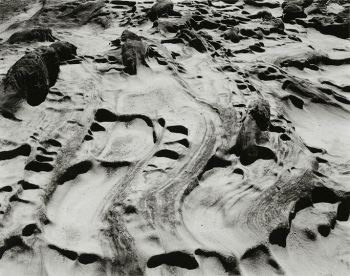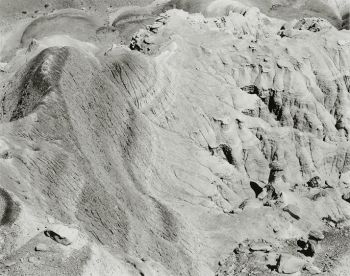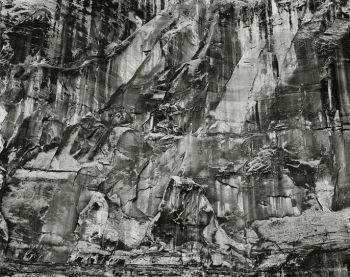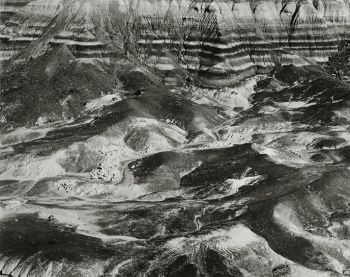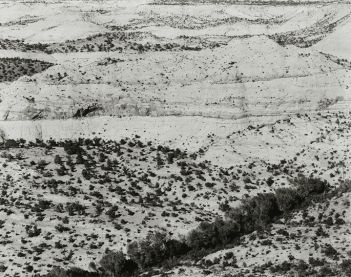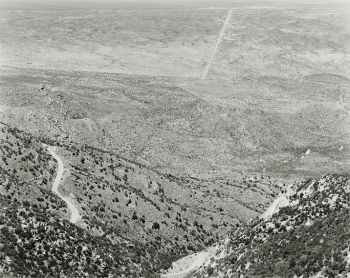Landscapes 1975–1979 Vol. I (1981)
Michael A. Smith
I traveled and photographed from 1975–1979 mostly throughout the Western United States. During my three major trips in 1975, 1978, and 1979 I exposed well over 1,000 8x10-inch negatives, and close to 100 8x20-inch negatives. At the end of 1979 I felt "landscaped out" and was ready to begin photographing in the urban landscape rather than the natural one.
Up until the end of 1974 I had mostly supported myself by teaching photography At the beginning of 1975 I stopped teaching and vowed to make my living just from sales of my photographs as fine art. By 1979 I realized that if that were to be possible I would need a book of my photographs. It seemed appropriate that a book of the landscape photographs I had made over the last few years would mark a proper closure to that period.
I originally figured that a book that would retail for about $40 would be about right in terms of quality, but I realized that few people would buy a $40 book of my work, as I was an unknown photographer to the general public. I thought the public would buy a $15 book, but the reproductions in a $15 book couldn't possibly be of high enough quality to do justice to my contact prints. So I thought I would do a fine book—one that might need to sell for $100. I figured that those who wouldn't buy a $40 book of my work probably wouldn't buy a $100 book either—so as far as these people were concerned, I hadn't lost anyone. And I thought that those who did know and collect my photographs would readily pay $100—for they would prefer a book of high quality. With these thoughts in mind, I spoke with some printers. When I saw what the cost of printing was, I realized that the book I had in mind would need to sell for $150.
I had no money whatsoever for any part of this publishing project and determined to raise funds by making a pre-publication offer at a special price. A few years previously Ansel Adams offered a "Special Edition" of his book Yosemite and the Range of Light. In addition to the book, buyers received a print he made of a waterfall. He issued it in 500 copies. A few other photographers had modified Adams's approach, and for their special editions offered purchasers their choice of one of four prints, each printed in a edition of fifty. I took that concept several steps further. I offered buyers their choice of any print in the book, and at half price. On the surface it would appear that I would have a lot of printing to do, but in reality, the opposite was the case. When I print a negative, I make five copies, one for my archive and four for sale. The quality of my photographs is consistently high, and with my Special Edition offer many different photographs were selected rather than just a select few. As a result, I had little additional printing to do. Some purchasers of my pre-publication offer found this offer so attractive that they purchased ten or more prints. Through my Special Edition pre-publication offer I was able to raise over $100,000.
I wanted my photographs to be reproduced at full size. Originally, the book was going to contain mostly reproductions of my 8x10 prints with only a few 8x20s as fold-outs. But as I made more 8x20s, I realized that there would be too many to have fold-outs, and most reluctantly I realized that I needed a second volume. Then I learned that to print the book in signatures and to have a page size of 11"x13", a size I deemed appropriate for full–size reproductions for my 8x10-inch prints, meant having to use such a large press that the cost would be prohibitive. The printers recommended that in order to bring the cost down the pages could be 11"x12". But 11"x12" pages would have meant that the borders of the reproductions would be too narrow. In order to keep the page size 11"x13", the solution the printers suggested was to print the reproductions "four-up" and then tip them in by hand. Printing the reproductions this way also offered greater contrast control.
A friend suggested that as long as I was not printing the reproductions in signatures, I could have the text printed in letterpress. A reasonable person would have reacted, "Great idea, I'll see what it costs." Not being very reasonable about certain things, my reaction was, "Great idea, I'll do it. It's obviously the best way to go." Cost? I'd worry about that when I had to.
Eventually, the book that I originally thought would sell for $100 became a two-volume set of books with letterpress text printed on acid-free paper and with the plates tipped-in by hand. My cost was over $100,000 for 1,000 signed and numbered copies. To justify the high selling price of $325, I decided to tip-in an original 8x10-inch print as the frontispiece to Volume I.
I published Landscapes 1975–1979 under the imprint "Lodima Press." The word "Lodima" is Amidol spelled backward. Amidol is the name of the print developer I used—the same one that Edward Weston used. It was extremely gratifying when the two-volume Landscapes 1975–1979 was awarded Le Grand Prix du Livre (best photography book of the year) at the Rencontres Internationale de la Photographie (International Festival of Photography) in Arles, France, in 1981.
Because tipping in each plate was an extremely time-consuming process, binding the books spread over more than a dozen years. At some point a pallet of the letterpress sheets tipped over and the pages were ruined. Because of this, the edition, which called for 1,000 signed and numbered copies, ended at 600. The last copy sold almost ten years ago for $3,500. When possible, I have been buying back copies and currently have one set of books for sale.
Purchase
